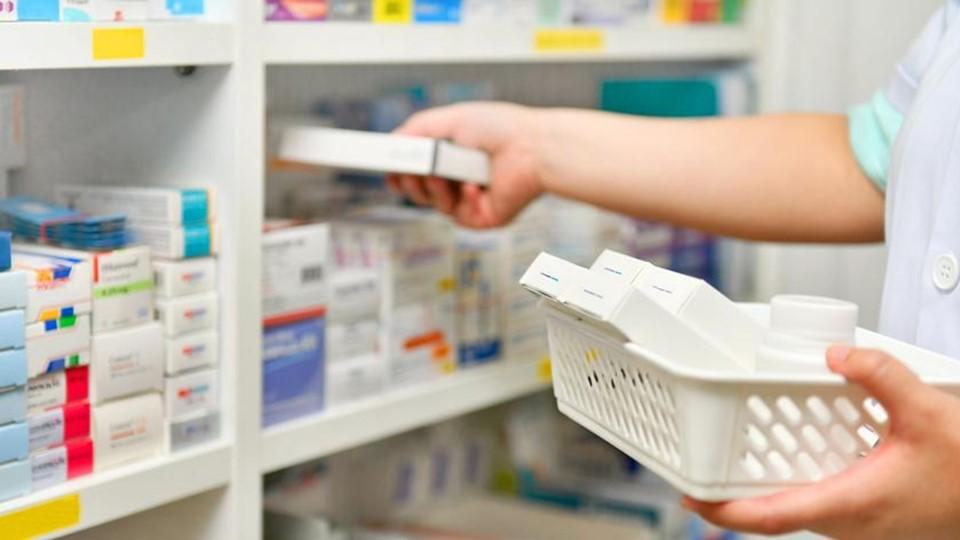Getting it right: the UK’s pathway for 2017

With the impact of Brexit and the US elections on the life sciences industry and patient access to medicines expected to be an enduring talking point for many months – or years – to come, Claire Bowie looks at the implications for global HQs and what the UK needs to do to get in shape for 2017.
As the aftershock of the US Presidential Election result continues, the life sciences sector is frantically trying to figure out what 2017 holds and unpick the likely scenarios and consequences of both a Trump presidency and the extraction of the UK from its stronghold of the European Union.
Although pharma stocks temporarily rose after Donald Trump was elected – because, for a short time, industry believed he would be more lenient than his rival, Hillary Clinton, on cost controls – the pricing pressures in the US and beyond “will not go away”, delegates at a recent Pharmaceutical Directors’ Club (PDC) 1 meeting heard.
“The golden age of innovation is transforming medicine,” Sarah Rickwood, Vice President at QuintilesIMS told the audience. “And with this come the critical questions of funding and price.
“This is particularly key for the seven countries that account for the greatest proportion (86%) of sales for new chemical entities during their first five years on the market,” she noted. “The USA, UK, Italy, Germany, France, Spain and Japan are where the research-based pharmaceutical industry is getting its return on investment and where innovation is being supported.”
Certainly, it’s a debate that is particularly pertinent at a time when healthcare systems’ and pharma companies’ expectations of spend are totally at odds. “Pharma needs rapid uptake of new products and high early sales,” Rickwood explained. “In contrast, healthcare systems want to be able to manage spend over a longer period of time and have predictability over the lifetime of a drug.”
Speciality medicines lead the charge
But with speciality medicines now representing more than 30% of the $893 billion global pharmaceuticals market – growing 10% in 10 years to over $270 billion – it’s harder and harder to balance the books (Source: QuintilesIMS audited market data). “This compares to 1.5% growth in the market for traditional medicines during the same time period, lending substantive weight to the need for alternative means of funding innovative medicines in a budget-constrained setting,” Rickwood pointed out.
It’s a sentiment aptly demonstrated by the fact that cholesterol-lowering agent Lipitor (atorvastatin) generated $142 billion in list price revenues for manufacturer Pfizer during the course of its patent life – significantly more than the high-cost hepatitis C medicines that have recently entered the marketplace. However, said Rickwood, while Lipitor revenues were earned over decades, spend on hepatitis C medicines had been compressed into a very short time period, putting huge pressure on already-constrained healthcare budgets.
Ultimately, the coming three-to-five years would see alternative funding mechanisms being explored, including differential and performance-related pricing models. A critical juncture had been reached, Rickwood stated, where healthcare systems and the life sciences sector must reach a consensus on their definitions of investment, return and value, in order to identify the best approach to the funding of, and patient access to, new medicines.
A politically-charged healthcare setting
In addition, if the shift towards high-cost speciality medicines and resulting impact on healthcare system funding and budgets were not enough, the unstable and unforeseen political environment of the past six months has been adding to the cascade of concern for pharma, both on a global level and for UKplc in particular.
Ultimately, the PDC meeting heard, the UK life sciences sector was facing a number of risks, in terms of inward investment, clinical research, resourcing and market access for new chemical entities. The cost of doing business in the UK was increasing and this, combined with the difficult political environment and weakening of the pound, could lead to companies bypassing the UK as an early-launch market.
“In the past, the UK has been selected as an early-launch market, partly in recognition of the fact that UK launch prices are often used as a reference for other countries and partly because of the esteem in which NICE technology assessments are held internationally,” one industry insider told pharmaphorum.
“However, given that the NICE model of the future is likely to be tougher, and will also be accompanied by a substantial fee, this only adds to the feeling that the UK will become a much more challenging environment over the coming years. Add to this the potential impact of Brexit on research programmes, and there is the distinct possibility that global organisations might question the status of the UK as an early-launch market,” they added.
Brexit’s impact on pharma strategy
However, it’s not just the launch and pricing environment that is likely to hit company strategies relating to the UK, but also the combined impact on resourcing and diminished GDP projections that have followed the decision to leave the European Union.
Around 70,000 people work in the life sciences research sector in the UK, a panel session at the recent Partnerships in Clinical Trials Europe conference revealed. While this has meant the UK has earned a substantial reputation as a microcosm of research, the effect of Brexit on the 70% of these professionals who hail from outside the UK is unclear.
“The enormity of unravelling Brexit is so great and there is very little transparency in relation to the level to which the R&D and research environment is being considered,” one panel member commented. This resourcing issue, combined with GDP projections that have tumbled some 3%-5%, is leading the life sciences sector to “evaluate” its short-to-medium-term future in the UK, with another panel speaker adding, “It’s hard to say what the impact is likely to be.”
Without doubt, this melting pot of what would be critical issues, even in isolation, is causing substantial trepidation in pharma boardrooms all over the world.
The message for pharma, Rickwood argued, was that the majority of the challenges were not precipitated by Brexit. “While Brexit raises the risk that companies will downgrade the UK in their launch and investment priorities, there are both positive and negative elements to consider regarding the position of the UK as a whole that will have to be fed into what should be a more complex and longer-term decision.”
What should be concerning, she noted, were proposals out for consultation that could see NHS England impose a ‘budget impact threshold’ of £20 million in any one of the first three years that a product is on the market. “If a product exceeds this limit, NHS England will be able to take measures to agree special arrangements to address this spend,” she explained.
Is cost-effectiveness enough?
“The key objective for industry is to demonstrate value for money and cost-effectiveness by securing a NICE recommendation – which also has positive ramifications in other countries, as NICE is the gold-standard HTA [health technology assessment] body internationally,” said Matt Regan, General Manager of AbbVie UK. “What concerns me most about the current consultations is that, even after proving cost-effectiveness, NHS England may decide not to use a cost-effective medicine within the NHS. This would be a significant backward step for advancing patient care in the UK.
“This also introduces significant uncertainty for companies planning the next major medicinal innovations – if a positive NICE endorsement does not lead to the availability of this medicine for physicians and for patients we are talking about a very significant change to the UK life sciences ecosystem. Ultimately, if proving cost-effectiveness is not good enough then it becomes very arbitrary about how patients get access to innovative, cost-effective medicines.”
Launch countries are chosen based on market potential, the sophistication of the healthcare system and its ability to take up and use the product early and well, plus the influence of that country on the product’s uptake in other countries, Rickwood added. But, Regan pointed out, the danger was that this huge unpredictability over whether a positive NICE decision would hold the same value could trigger companies to start looking at markets that offered a more certain – and faster – time to market. “If there is no guarantee your medicine will be used, despite proving cost-effectiveness via a positive NICE appraisal, not to mention the paying of substantial HTA fees, the natural consequence is for companies to review their priority launch markets.”
And this, in turn, could trigger a cascade effect whereby, if the UK lost its early-launch status, there could be a further impact on NICE’s value internationally. In this scenario, countries that would have taken a lead from NICE could then have to make their own technology decisions because a product had launched in that market prior to the UK, the industry insider told pharmaphorum.
But it’s not all bad…
Despite this, there are positives to be drawn following the decision to leave Europe. These include the government’s earmarking of £2 billion for basic research, including on biotechnology, plus the recent – and somewhat unexpected – announcement that the UK will continue to be part of the European Patent Convention. “We hope this theme continues through other elements of approvals, regulation and distribution,” Rickwood stated. “This, combined with the evident desire of the UK government to position the NHS as a great place to do clinical research, as well as the global influence of NICE and the fertile ground the NHS offers, provides valid and strong reasons for pharma to continue its investment in the UK.
“What we have is an opportunity to nudge things towards a more positive environment for the pharmaceutical industry,” she commented – a sentiment echoed by Regan. If the UK wanted to be a leader in life science, that opportunity was there, he noted, “But we need to have a mature discussion about how to drive uptake of innovative medicines to improve population health outcomes.
“It’s critically important that the life sciences industry is given some positive signals regarding the future, in line with the comments from Prime Minister Theresa May,” Regan went on. “We’re watching the situation very closely because the decisions made today will have an impact on the sentiment of global companies towards the UK for many years to come.”
- The Pharmaceutical Directors Club (PDC) is an independent issue-driven forum for senior executives that meets three times a year, led by a high-level industry steering group. For more information, go to: http://www.ptbusinessgroups.com/pdc
About the author:
Claire Bowie is Head of Publishing at pharmaphorum. She has extensive experience in healthcare communications and publishing, supported by a background in biological sciences.
Read more from Claire Bowie:












